This is the beginning of the new resource blog posts for the ZOO or Jungle unit for Kindergarten English Language Learners. Click on the Link to the complete preschool materials for language teachers: https://www.teacherspayteachers.com/Product/Zoo-Animals-Unit-for-Kindergarten-Holistic-English-Series-26-8078353
Start with the zoo flashcards as a support material, place it in the middle of the classroom or board. Ask the students which animals they have seen or think lives in a zoo in their own language. As they come up with names, place them under the zoo flashcard and say the name in English.
Introduce this sentence for your students to model:
The hippo lives in at the zoo.
Use the zoo flashcards to reinforce the structure What is it?
Teacher: What is it?Students: elephant! It’s an elephant.Use the flashcards to introduce how the animals actually move.
Teacher: How does the elephant move?Students perform the action.
Teacher: Oh! Elephants walk.Continue with the rest of animals using the flashcards. Introduce the verbs such as swing for the monkey,swim for the sea lion, walk for the elephant.
Place several animal flashcards around the classroom. It can be on board, under the chairs, on the desks, etc.
Teacher: Where is the lion?Students: (run and touch) Here!
Move like the zoo animals do. These are commands review flashcards.
Students will understand and be able to give simple classroom commands. Students should be related to the language used in the classroom. Here is an example with the giraffes. There are more zoo animals flashcards for students to identify how they move, such as: touch,eat, greet and more.
Teacher: What is the giraffe doing?Students: It's writing.
Students will understand and follow spoken instructions. Describe the zoo animals movement. Show the Command flashcards one by one and say: Stand up like the bear!
The zoo animals are performing an action that are shown on each flashcard.
Show the students another set of flashcards and ask questions: What is the tiger doing?
Use the lions or any other movement or action verb flashcards to count the animals.
Teacher: Let’s count the lions.Students: one, two, three, four, five! Five lions.
Use the flashcards to help students identify the zoo animals body parts. Introduce the word tail. Place several zoo animals on the board but inside a plastic clear sheet. Hand in several whiteboard markers and give instructions to some students to circle the tail.
Teacher: Zoe, circle the tiger’s tail!Mike, find the eagle’s tail and circle it.Teacher: Whose tail is it?Students: It’s the zebra’s.Continue with long and short.
Teacher: Which animals have long tails?Students: the lion! The giraffe!Teacher: Jill, Cross their tails.Do the same with short tails.
Keep working with the adjective long! Use neck and legs. Have the students find the animals with long necks and draw a rectangle. Then have them circle the long legs on each animal. Ask questions.
Teacher: What animals have two legs?Students: the kangaroo, the flamingo and the monkey!Teacher: What animals have four legs?Students: the giraffe and the elephant!Students can write the number next to each animal’s legs.
Repeat with the short legs animal flashcards. This activity can be done with arms, necks, feet and any other body part that you would like to contrast between long and short.
Sort the animals into big and small. Elicit the language instead of having your students repeat after you. Use your hands to show big or small and have them give you the correct word.
Any zoo animal flashcard can work to identify the body parts. Include as many words that you need: stripes,neck, ears, eyes, legs, tail,paw,beak,trunk,tail,wing.
There is a set of Zoo Animal’s Faces to review the parts of the face.
Students will associate what the ZOO animals eat.Use the flashcards to help associate the zoo animals to what they eat. Place the giraffe flashcard in the middle of the board. Ask students what does the giraffe eat. They might say words in their native language. Pull out the flashcard of the food items they have guessed and say the word in English.
Review the two-dimensional shapes using the zoo animals that come in four basic shapes: rectangle, circle, triangle and square. Students should be able to identify the shapes.
Check what else is in for you using this resource: https://eflpreschoolteachers.blogspot.com/2025/02/zoo-bears-for-valentines-day.html



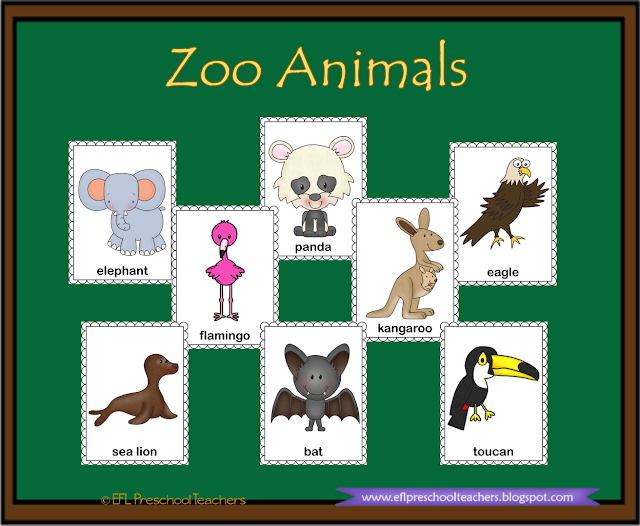
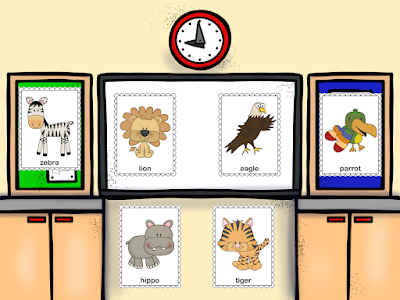

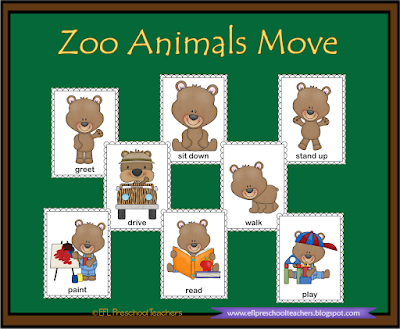

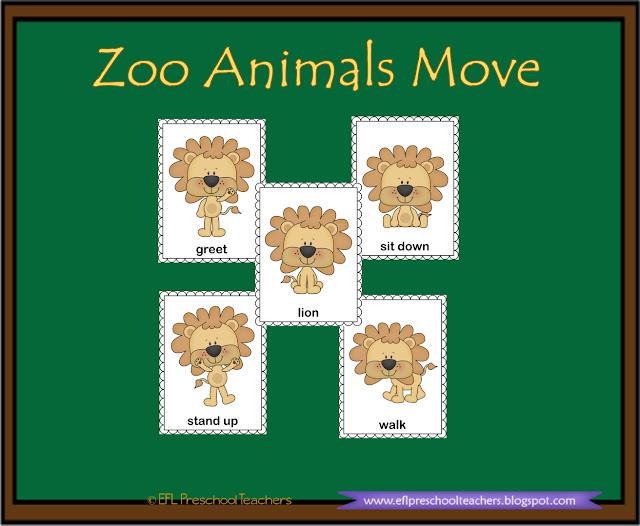







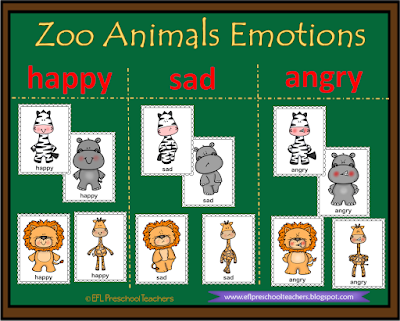



No comments:
Post a Comment
Note: Only a member of this blog may post a comment.